In the sprawling network of Soviet forced labor camps known as the Gulag, millions of men and women were subjected to unimaginable horrors.
They were forced into back-breaking labor and inhumane living conditions, including the daily threat of torture, execution, and murder.
The Gulag was an instrument of political repression. It was used by Soviet leaders from Lenin to Stalin, to eliminate perceived threats. This included political dissidents and religious leaders, as well as ethnic minorities and ordinary citizens who were deemed enemies of the state.
Life in the Gulag was a constant struggle for survival. Prisoners were forced to endure long hours of hard labor in mines, factories, and construction sites. This often resulted in widespread injury, illness, and death.
Food and medicine were in short supply. Many prisoners suffered from malnutrition, disease, and untreated injuries.
The harsh living conditions, coupled with brutal treatment by guards and fellow prisoners, made the Gulag a living nightmare.
Despite the brutal conditions, some survived to tell their stories. These accounts provide both a glimpse into the horrors of the Gulag labor camps and a look at the resilience and humanity of the prisoners themselves.
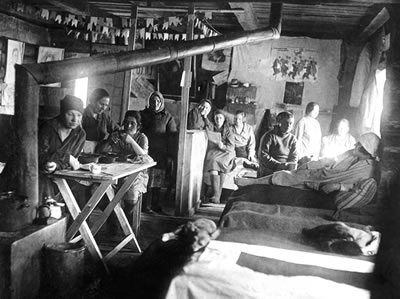
The Origins and Purpose of the Gulag System
The Soviet Union’s system of concentration and correctional labor camps, known as the Gulag, was established in 1919. What began as a few camps, quickly expanded during Stalin’s reign of terror.
The Gulags were overseen by a special division of the secret police. They were tasked with overseeing the forced physical labor of prisoners.
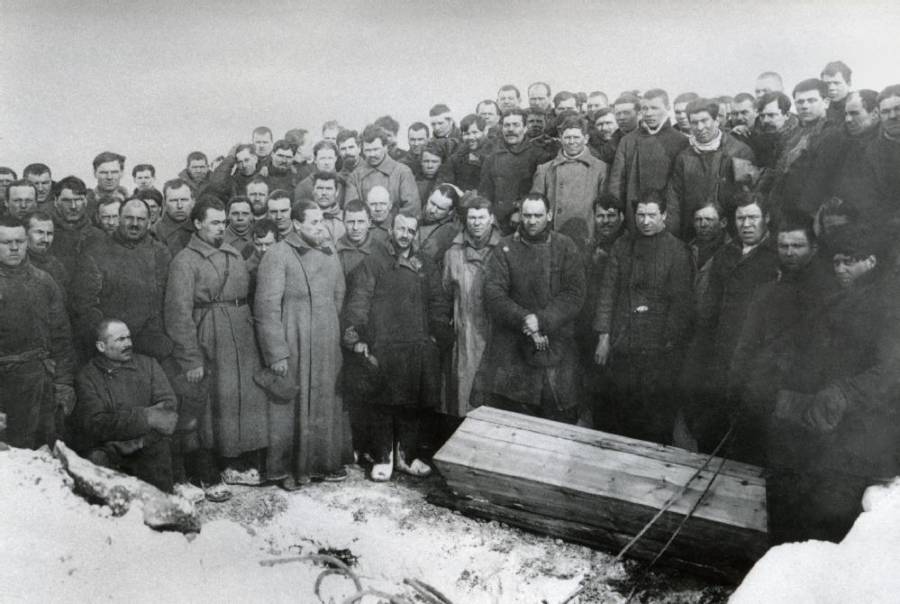
Its main purpose was to provide forced labor for industrial and construction projects throughout the USSR. It also served as a tool for political repression.
The majority of Gulag prisoners were not hardened criminals. Rather, many were innocent people who were locked up for a variety of political reasons. Many were arrested based on trumped-up charges or simply because of their ethnicity.
Political prisoners suffered the most in the Gulag. They were subjected to brutal hard labor conditions and the heavy-handed methods of guards, as well as the terror of criminal prisoners.
According to historians, the entire Gulag system imprisoned somewhere around 15-18 million people. At least 1.5 million did not survive.
The victims included individuals from not only the Soviet Union, but also from other countries such as Czechoslovakia, Poland, Hungary, France, and the United States.
Gulag Living Conditions
The living conditions in the Gulags were notoriously brutal, violent, and inhumane.
Prisoners often lived in overcrowded, poorly heated barracks, which featured a camp zone surrounded by fences or barbed wire. This was all guarded by armed men in watchtowers.
Due to scarcity – both intentional and unintentional – competition among prisoners for access to life’s necessities was fierce. Violence was commonplace.
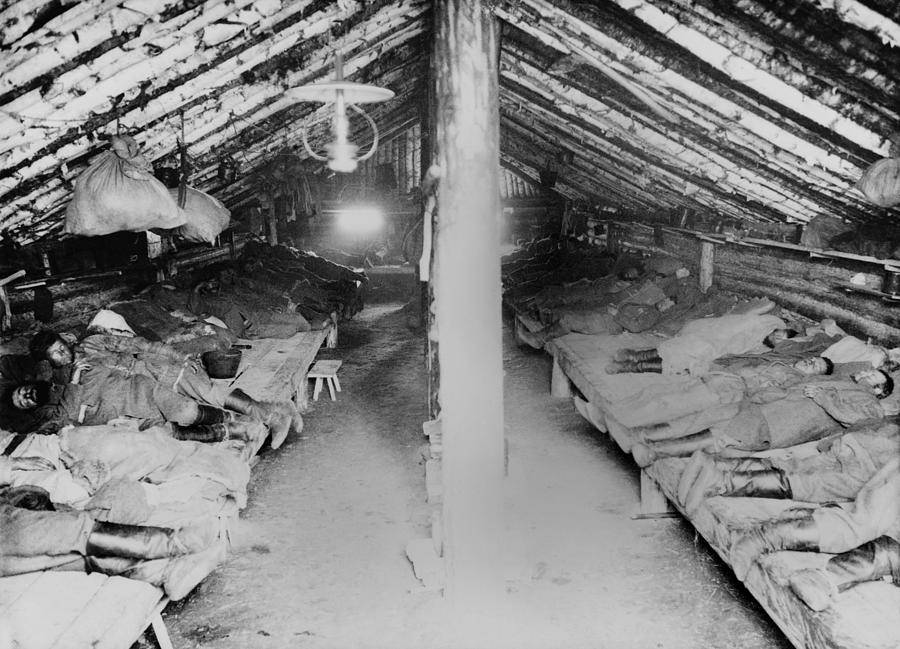
Hunger, disease, heavy labor, and arbitrary punishment at the hands of camp guards all took their toll on prisoners. Informers were always present, and prisoners were constantly on guard against being reported to Gulag authorities.
Living and working conditions did vary a great deal depending on a few factors. The factors depended on the specific camp, the type of crime a prisoner committed, and broader events. This included countrywide famines, World War II, waves of terror, and sudden influxes or releases of prisoners.
In some camps, non-political prisoners had lighter restrictions and could move around freely. While political prisoners and serious criminals were kept in more heavily guarded compounds. Their barracks were locked and their communications with the outside world were limited.
Occasionally, prisoners would be sentenced to solitary confinement cells. These were hardly large enough for one to lay outstretched, leaving the prisoners constantly in discomfort.
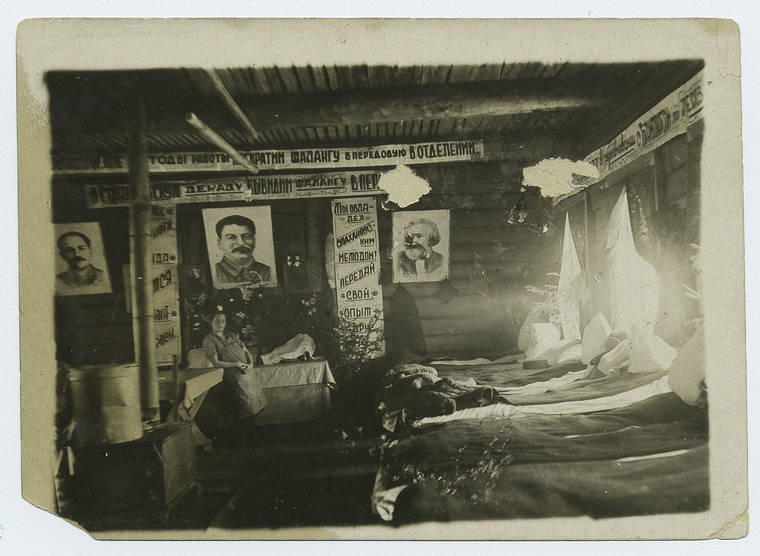
Altogether, conditions in the Gulags were cold, abysmal, crowded, and painful. The system was designed to break down prisoners and transform them into a docile, obedient mass. The focus was solely on evading constant hunger and mistreatment.
Given its brutality, it succeeded more often than not.
Food and Clothing
The living conditions in the Gulags were harsh. Access to food and clothing was hard to come by.
Prisoners were given meager daily rations – called “paika.” This barely provided enough sustenance for survival. Those who failed to meet work quotas had their rations reduced further.
If they continually were unable to make quotas, their rations would be so little. This put them at risk of starvation.
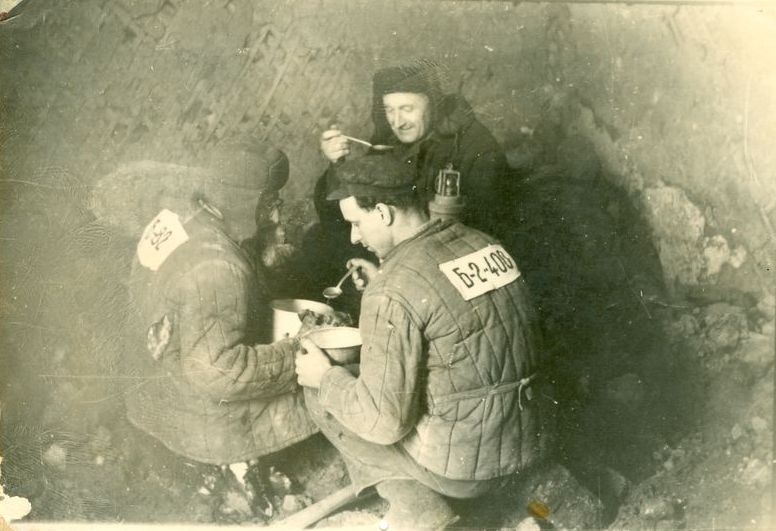
This was an all-too-common occurrence. It happened so often that some prisoners were known as “goners.” This referred to prisoners who were so severely undernourished that they were close to death due to starvation. They served as an unpleasant reminder to others of their potential fate.
In the Gulag camps, eating utensils were often scarce. Prisoners had to use their hands or makeshift tools to consume their meager meals. Even spoons were considered to be a luxury.
Cold weather was another enemy in the Gulag. Prisoners were provided with inadequate clothing to protect against the harsh elements. While some received winter overcoats similar to those worn by the general population, maximum-security prisoners were given second-rate jackets.
The freezing cold often won out, especially in the darkest, coldest winters – yet another aspect of the Gulag system’s inhumanity.
Forced Labor in the Gulags
The Gulags camps were designed to extract forced labor. Therefore, work in the camps was arguably the worst aspect of it all.
Forced labor in the Gulag camps was characterized by brutally long work hours. Days often lasted up to 14 hours. And it was intense, physically demanding labor.
Spurred on by the heavily armed guards that oversaw their work, prisoners were assigned all manner of tasks. Felling trees, digging the frozen ground, mining coal and copper, sometimes with their bare hands. They commonly worked on large-scale construction projects as well.
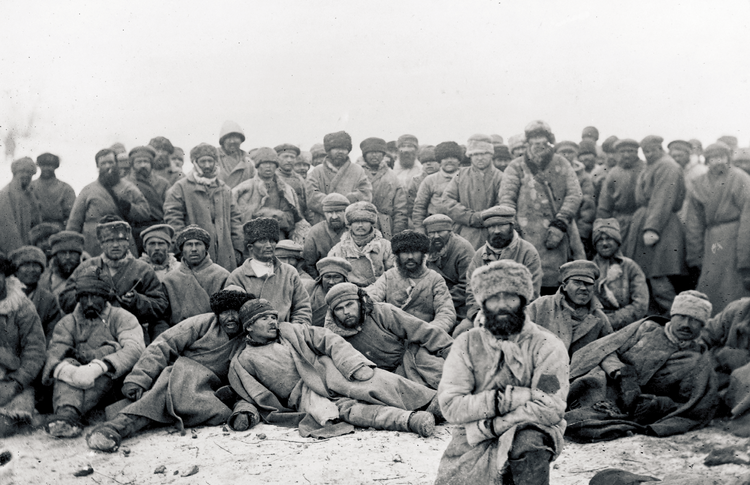
At a typical logging camp, a normal day for a Gulag prisoner involved waking up at 6:00 AM for breakfast before a one-and-a-half-hour march to the forest for logging work.
This would last all day. Prisoners finally returned to camp around 6:00 PM for dinner. But then they had to work on after-dinner duties until lights out at 11:00 PM.
Despite the grueling nature of the work, prisoners were barely fed enough to sustain such labor. This often led to malnutrition and starvation. Working to their limits, many of them would die.
The prisoners were seen as having almost no value. Those who died from hunger, cold, and hard labor were quickly replaced by new ones.
Despite changes in administration and responsibilities over the years, the Gulag remained the sole supplier of prison labor to the Soviet economy for decades. Prisoners were used to build industrial plants and other building projects.
The White Sea-Baltic Sea Canal was one such project. Built by over 100,000 prisoners using primitive tools, it resulted in many prisoner deaths.
Meanwhile, the remote and bitterly cold Kolyma camp was the most feared of all Gulag locations. It was considered the most challenging place to survive in the whole Gulag system. Its name caused shivers to run down the spine of any prisoner who knew of it.
The relentless work and brutal conditions of the Gulag labor camps not only sapped the strength and will of the prisoners but also produced such pronounced human suffering and tragedy that will never be forgotten.
Prisoners and Jailers
The Gulag held a variety of prisoners, including violent criminals. They all spent their sentences in the Gulag instead of regular prisons.
Political prisoners were also a significant group. This included not only actual opponents of the Soviet regime but also many innocent people who were caught up in the paranoid clutches of the Soviet secret police.
These prisoners were subjected to arbitrary and severe legal campaigns. They were often punished for petty crimes such as theft, lateness, or unexcused absences from work with many years in the Gulag.
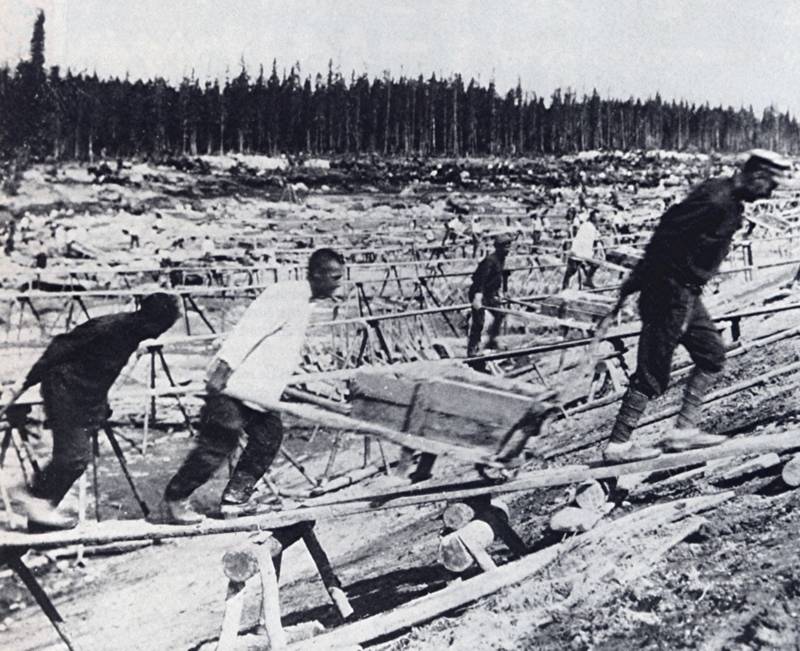
The Gulag often disregarded criminal codes that required more lenient sentences like work in colonies. Transporting these prisoners to remote colonies could take up to six months, which wouldn’t help in addressing labor bottlenecks.
As a result, the most significant projects were carried out in the Gulag. Special decrees allowed the bureaucratic overseers to displace prisoners from colonies to camps and for longer than their initial sentences allowed.
The role of the secret police, like the Cheka, NKVD, and KGB, was to administer discipline to the Gulag camps.
They imposed strict discipline and often resorted to violent means to prevent prisoners from attempting to escape. In addition, they were involved in the torture and interrogation of prisoners. This led to false confessions and many innocent people being sent to the Gulag.
They also acted as informers and spies. They infiltrated the prisoner population to prevent any resistance or rebellion.
The secret police’s presence created an atmosphere of fear and terror that reinforced the Gulag’s oppressive system. This made resistance and survival incredibly difficult for the prisoners.
Resistance, Survival, and Escaping the Gulags
Life in the Gulag was an arduous experience. Many prisoners attempted to escape.
However, due to the harsh conditions, the remote nature of the camps, and the severe punishment for those who were caught, very few were successful.
Escapees faced the possibility of being shot on sight. Even if they managed to evade capture, the harsh elements of the Siberian wilderness often proved too much to bear. In colder regions, escapees were sometimes left to perish as it was believed that the harsh winters would take them before they could make it very far.
Despite this, some prisoners still attempted to escape. Those who worked in logging were particularly vulnerable to being caught since their work was done in a square clearing that was surrounded by forest and closely guarded.
Some prisoners still managed to flee by digging tunnels or making improvised tools to cut through the fence. Others attempted to blend in with the local population. But, they were often turned in by locals who were offered rewards for capturing escapees.
Prisoners also engaged in various forms of resistance, both individually and collectively. Some engaged in small acts of sabotage. They damaged equipment or stole tools, while others organized more significant protests or uprisings.
The punishment for such activities was severe. Offenders were often subjected to torture or execution.
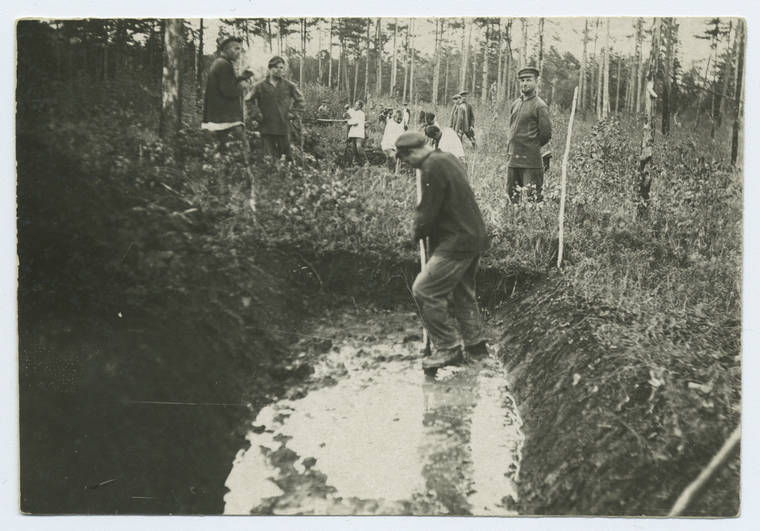
Despite this, resistance continued. Some inmates formed secret societies or even tried to educate others about their rights.
Ultimately, though, the oppressive conditions of the Gulag made resistance a difficult and often futile endeavor.
The Legacy of Life in the Gulag
The Gulag system, with its brutal practices and inhumane treatment of prisoners, left a lasting legacy on Soviet and East European history. Its impact on the culture of Russia and beyond was enormous.
In the mid-1950s, after the death of Stalin and the accession of Nikita Khrushchev, the Gulag system began to fall apart. By 1957, it was abolished.
Although the system officially came to an end in 1960, its legacy continued to shape the thinking of those affected, their families, and their communities. Many works of literature and music from the Soviet era dealt with the theme of the Gulag and the experiences of those who were imprisoned there.
The memoirs of former prisoners such as Aleksandr Solzhenitsyn and Varlam Shalamov, as well as the writings of dissidents like Yevgenia Ginzburg, became symbols of defiance and resistance.
These works not only harshly criticized the Soviet regime for its crimes but also celebrated the courage and determination of those who survived the Gulag.
The forced migration of artists and other cultural figures to Siberia also had a lasting impact on the cultural landscape of the Soviet Union.
The experience of living and working in the Gulag system became a source of inspiration for many writers, artists, and musicians. This resulted in the creation of works that explored the themes of imprisonment, survival, and resistance.
Overall, the legacy of the Gulag system is a complex one.
While it represented one of the darkest chapters in Soviet history, it also gave rise to a rich cultural tradition that continues to influence contemporary Russian society.
By remembering the experiences of those who suffered under the Gulag, we can gain a better understanding of the past and ensure that such atrocities are never repeated in the future.
References
Bauer, Brad. “The Gulag: Life Inside.” Hoover Digest, Hoover Institution, Stanford University, 30 Jan. 2005, https://www.hoover.org/research/gulag-life-inside.
Gregory, Paul. “An Introduction to the Economics of the Gulag.” Gulag History, Structure and Size: A View from the Secret Archives, University of Houston, https://uh.edu/~vlazarev/4389/Gulag-Gregory.htm.
“The History of the Gulag.” Gulag Online, Gulag.cz, https://gulag.online/articles/historie-gulagu?locale=en.
“Soviet Forced Labor Camps and the Struggle for Freedom.” Gulag, Center for History and New Media, George Mason University, 2021, https://gulaghistory.org/nps/.

